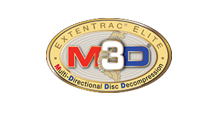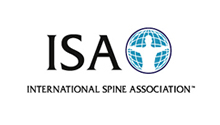|
TERMINOLOGY (SYNONYMS)
- Slipped
vertebrae
- Displacement
of a vertebral body
- Anterolithesis:
(forward translation of a vertebral body relative to the one below.)
- Retrolisthesis:
(backward translation of a vertebral body relative to the one below)
INTRODUCTION
Spondylolisthesis refers to the forward slippage of one
vertebral body with respect to the vertebrae beneath it. If a person has
spondylolysis the top bone either settles forward on the bottom bone or slides
back and forth on the vertebrae underneath. This most commonly occurs at the
lowest freely movable vertebrae which is L5, upon S1. It is also fairly common
at the level of L4 upon L5. Spine
x-rays taken with the patient standing, bending forward and bending backward
would show if the bones were slipping on one another. If so the person would be considered for a fusion of the
bones to join them and make them act as one. A defect in the construct of bone
between the superior and inferior facets with varying degrees of displacement
so the vertebra with the defect and the spine above that vertebra are displaced
forward in relationship to the vertebrae below. It is usually due to a
developmental defect or the result of a fracture. There are five primary types
of spondylolisthesis which are:
- Type
1: The dysplastic (congenital)
type which occurs as the result of a developmental defect in the upper
arch of L5 or the upper portion of the sacrum
- Type
2: Isthmic type which results form
a defect in a pair of bones along the back of the vertebrae (pars) which
permits forward slippage of the uppermost vertebrae. There are three subcategories of
type 2 which are the lytic (stress fracture) form, the elongated bone
(pars), and the recent bone fracture (pars).
- Type
3: Degenerative type which
acquired secondary to disc degenerative and loss of facet joint stability.
The spinal segment becomes gradually unstable and shifts forward over
time. The bone is still intact.
- Type
4: The traumatic type which can
occur at any age secondary tot fracture of any part of the back portion of
the vertebrae.
- Type
5: The pathological type with
result form generalized bone disease such as severe osteoporosis (thinning
of the bone) or Paget disease.
Spondylolisthesis can be graded based upon the amount of
slippage forward (or setting forward) with respect to the vertebrae below. The
grades are:
- Grade
1: less the 25% of vertebral diameter
- Grade
2: 25-50%
- Grade3:
50-75%
- Grade
4: 75-100%
PREVALENCE
- Age at detection: usually 10-20
years old
- More common in females
|

















